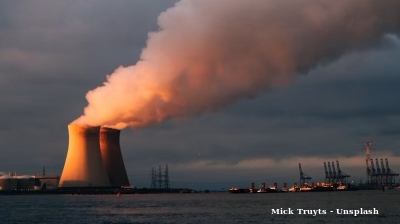Belarusians are fed up with being poor. They are rising up to defy President Alexander Lukashenko, who is facing an unprecedented challenge to his 26 years in power from former housewife and now leading opposition candidate Svetlana Tikhanovskaya in the August 9 elections.
There are many factors that have been fuelling the country-wide rebellion – Lukashenko’s total inaction in dealing with the coronacrisis is probably the straw that broke the camel’s back – but underlying them all is a decade of economic stagnation and the lack of a future under the one-time collective farm manager’s neo-Soviet model.
And that model will no longer work now that Russia has finally started to withdraw its generous energy subsidies as a result of the so-called tax manoeuvre that has pumped an estimated $100bn into the Belarusian economy in the last decade.
The majority of businesses belong to the state and wages have been stagnant at a quarter of the level in neighbouring Poland and the Baltic States. And that is fuelling the discontent that is driving Tikhanovskaya’s campaign.
Under pressure
Belarus is having a few bad years. GDP grew only by 1.2% in 2019 due to a supply shock in the petrochemical sector – a major money spinner for Minsk – caused by the contamination of oil imported through the Druzhba pipeline.
Now Belarus’ GDP will fall by 5% year on year in 2020 as a result of global coronavirus (COVID-19) related shocks reducing foreign and domestic demand, while next year the country's economy could enjoy a mild 3.5% y/y of growth, according to the macroeconomic survey published by the European Bank for Reconstruction and Development (EBRD) in May.
“We expect the contraction of the Belarusian economy in 2020, whereas the fiscal balance will be in deficit, and the current account will deteriorate,” says Denys Anokhov, an analyst at RA Expert ratings agency that just confirmed the sovereign credit ratings of Belarus at ‘B’ with a change in outlook from positive to stable.


The economy is heavily dependent on the oil business thanks to its two modern refineries that came online in the twilight of the Soviet Union, and has been hit by a triple whammy as a result.
First there was the contamination of oil passing through pipelines from Russia via Minsk to Europe last year. Then there was the collapse of oil prices after Russia walked out of an OPEC+ production cut deal on March 6. And finally Russia’s has changed its tax code, which will reduce subsidies Belarus earns from re-exporting Russian oil by an estimated $3bn a year.
The loss of these revenues has fed through to hurt the rest of the economy.
“The restriction of Russian oil supplies at the beginning of 2020 further aggravated the situation in industrial production, which in the first 5M 2020 decreased by 3.9% y/y, although partially compensated by a surge in IT services and construction input. Accordingly, the real GDP fell by 1.8% y/y as compared with the corresponding period of 2019,” says Anokhov. “We expect that the Belarusian economy will contract deeper to 6% this year, as the continuing shock of the oil market and COVID-19 affect the core of the Belarusian economy.”
Debt load down, but FX risks up
The one place Lukashenko has been doing well is that the country’s debt is better managed. While he retains tight control over the biggest businesses that have been handed out to a small group of oligarchs close to the president, he has delegated the management of the country’s debt to an increasingly competent group of professionals, led by Minister of Finance Maksim Yermolovich.
Yermolovich told bne IntelliNews in an interview in London last June that he has a “plan B” if the country is hit by shocks and unable to carry out its goal of using foreign exchange earnings to pay down debt and loses Russian support. But he conceded that the whole economy needs to be restructured and that will take several years to carry out.
“The government's debt position remains favourable, supported by a conservative policy on new borrowings and a reduction of government guaranteed debt,” says Anokhov.
In 2019 the net increase in new debt was $0.2bn, and the ratio of gross government debt to GDP and budget revenues fell to 42.7% and 114.7% in 2019 respectively, following the strengthening of Belarusian ruble.
Government debt has favourable contractual maturities, consisting predominantly of multilateral and bilateral agreements with sovereigns and supranational institutions, according to RA Expert. In 2020, taking into account currency revaluation, short-term debt obligations are estimated at a favourable level of around 7% of GDP.
And this prudence means the international capital markets remain open to Minsk if it needs to raise more money in theory. In practice this has been more difficult and the Ministry of Finance cancelled a planned Eurobond issue in the first March after the markets “went crazy” thanks to the start of the coronacrisis. However, after Kyiv got a $2bn Eurobond issue away in the last days of July the market has seems to have calmed enough now to make a new issue of bonds possible.
In the meantime the Ministry of Finance has been placing bonds on the Russian and domestic markets: a RUB10bn ($135mn) placement on the Russian capital market and one Eurobond of $1.25bn that was placed at the start of the year before the crises started were four-times oversubscribed.
“However, the growing spread between US dollar-denominated Belarusian bonds and US government bonds shows that international investors are increasingly aware of the country's risks,” RA Expert noted.
The country’s debt is likely to rise this year as the economic slowdown and the weakening of the currency will inflate debt: 98% of Belarus’ domestic debt is denominated in dollars and will become more expensive to refinance.
“Under the influence of the weak BYN in 2020, we consider that the total government debt can rise up to 47% of GDP. In addition, Russia and the associated Russia-led Eurasian Fund for Stabilisation and Development (EFSD) account for over 60% of external debt, making further refinancing strongly dependent on the state of political relations between the two countries,” says Anokhov.

State budget to deteriorate
Thanks to the increasingly competent management of Belarus’ finances until this year’s crises hit, budget spending was gradually falling while revenues were increasing.
In 2019, the officially reported consolidated budget surplus amounted to 2.4% of GDP, while the adjusted budget surplus was 0.6%. Despite the decline compared to 2018, the budget execution exceeded forecasts, as it was carried out in conditions of lower export customs duties on oil products following the contamination scandal. Fiscal expenditure management was visibly improving as the Ministry of Finance backed away from offering the traditional government guarantees and subsidies for companies and projects. At the same time, with the new Ostrovets nuclear power station (NPP) coming to an end, the drain on the budget for the construction work started to slow.
This year’s combination of economic shock and the winding down of the Russian subsidies means RA Expert expect the budget to record a deficit, albeit a very modest 1% of GDP in 2020.
However, Lukashenko has not detailed the economic support measure the state may offer to get over the shock of the coronacrisis and spending may swell later in this year, thus expanding the deficit to 3-4% of GDP.
Monetary policy & banking sector healthy
Belarus’ monetary policy is also increasingly well run and the National Bank of the Republic of Belarus (NBRB) is sticking to its inflation targeting policy and achieving price stability via a floating exchange rate regime.
One of the few silver linings of the current crisis is that it has held inflation down across the entire region, and especially in Russia, which is the crucial market for the Belarusian economy. Inflation already fell to 4.7% in 2019, which was below the NBRB target rate of 5%, allowing the NBRB to cut rates. As of July the overnight rate was brought down to 7.75%, with more cuts in prospect.
The banking sector has also benefited from the increasingly liberal financial management and grew strongly last year.
“In 2019 the loans grew by 10.4% supported by the decline of market lending interest rates and excess of bank’s liquidity. Financial soundness indicators remain robust: as of 1Q 2020, the capital adequacy ratio remains at 15.1% that is higher than regulatory requirements, and the ROE and ROA were 10.4% and 1.6% respectively for the same period. Along with that, the regulator introduced a number of measures to curb the impact of the COVID-19 pandemic on the banking system sustainability. The key measures include credit holidays for banks and clients, mitigation of prudential requirements and partially releasing the capital conservation buffer,” says Anokhov.
In particular, non-performing loans (NLPs) in the sector fell to 4.6% of loan books, a very modest level, as of the end of 2019. The crisis will push NPLs up again in 2020, but starting from such a low base this is not anticipated to be a problem. RA Expert estimates NPLs will rise to 5.3% as of the middle of 2020; however, if there are going to be problems they will mostly likely hit the state-owned banks, which account for 62% of the system’s banking assets.


External shocks remain the main danger
Belarus’ financial affairs are increasingly well run, so if there are going to be major problems this year they will most likely come from outside the country, says RA Expert.
At the end of 2019, the balance of payments of the Republic of Belarus was in a surplus of 2.8% of GDP, supported by the inflow of FDI and reduction of payments on the financial account. At the same time, the current account deficit amounted to 1.8% of GDP mainly due to weak export affected by oil industry shocks, according to RA Expert.
International reserves, after reaching a peak in early 2020, declined in June to $8.8bn, as the NBRB carried out currency interventions to mitigate the volatility caused by the sharp depreciation of the Russian ruble. Nevertheless, having suffered from several debilitating currency devaluations in recent years, the level of reserves is now considered to be just adequate to ensure the stability of the currency.
“We expect that the current level of reserves with a significant share of liquidity assets will be maintained, supporting the external position in case of possible shocks. By our estimates, international reserves cover 2.5 months of imports of goods and services,” says Anokhov.
In the medium term a lot depends on what happens in Russia, by far Belarus’ most important trading partner, as well as the dynamics of oil prices on the global markets.

Features

Global leaders gather in Gyeongju to shape APEC cooperation
Global leaders are arriving in Gyeongju, the cultural hub of North Gyeongsang Province, as South Korea hosts the Asia Pacific Economic Cooperation summit. Delegates from 21 member economies are expected to discuss trade, technology and security.

Project Matador marks new South Korea-US nuclear collaboration
Fermi America, a private energy developer in the United States, is moving ahead with what could become one of the most significant privately financed clean energy projects globally.

CEE needs a new growth model as FDI plunges
wiiw economist Richard Grieveson says the CEE region’s long-standing model of attracting FDI through low labour costs no longer works.
KSE: Ukraine is facing a $53bn budget shortfall, but economy is stable for now
Ukraine is in urgent need of additional financing from partners as the continuation of the war drives up defence spending and reconstruction needs, jeopardizes budget financing, weighs on the balance of payments, and slows economic growth.




